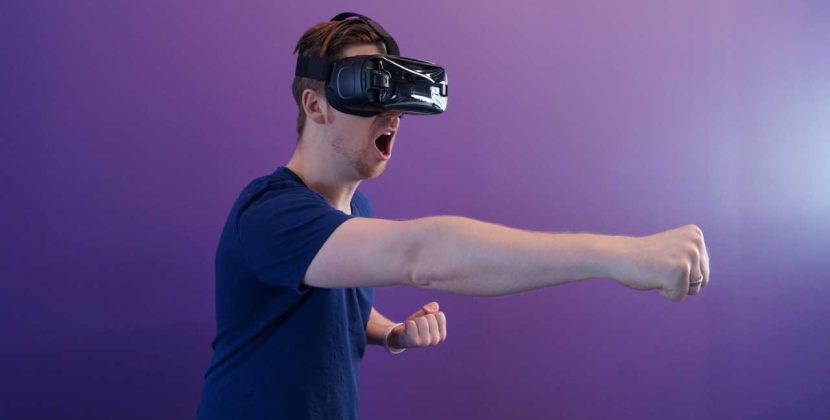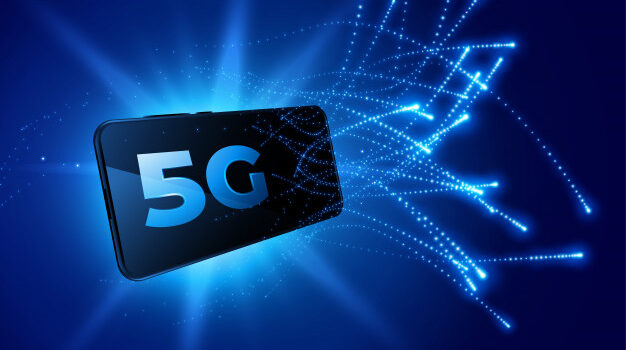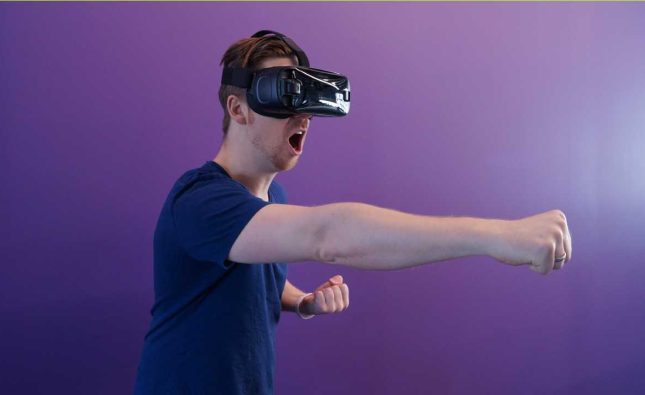
Fifth-generation (5Gwork) wireless technology the latest cellular technology generation designed to increase wireless networks’ speed and receptiveness dramatically. With 5Gwork, data communicated over wireless broadband connections can travel at speeds of several gigabits, with potential maximum speeds of up to 20 gigabits per second (Gbps) by some estimates. These speeds exceed the rates of the wired network and provide one millisecond (ms) or less latency, which helpful for applications that require real-time feedback. With more available bandwidth and advanced antenna technology, 5G will allow a vast increase in data transmitted over wireless systems.
5G networks and services will be gradually available over the next few years to meet the increasing dependence on mobile and internet-enabled devices. Overall, with the introduction of the technology, 5G expected to spawn many new uses, applications, and business cases.
How organizes 5Gwork?
Wireless networks consist of cell sites divided into sectors that send data over radio waves. Long-term evolution (LTE) fourth-generation (4G) radio technology forms the foundation of 5G. The use of several small cells necessary because the millimeter wave (MM wave) spectrum, the spectrum between 30 and 300 gigahertz (Ghz) that 5G relies on to generate high speeds, can only transmitted over short distances and it may cause interference. Unlike 4G, which requires extensive and powerful cell phone towers to carry signals over longer distances, 5G radio signals are transmitted through a large number of small cell phone stations located in places like light towers or rooftops. Of buildings. Physical and climatic obstacles such as buildings or trees.
Previous generations of wireless technology used regularity bands at lower frequencies. The wireless industry also considering using a low-frequency spectrum for 5G networks to use existing frequencies to expand their new networks. The low-frequency spectrum reaches greater distances but has lower speed and capacity than the MM wave.
5G wireless capabilities
The low-frequency radio spectrum consists of low and medium frequencies. Low-band frequencies operate at approximately 600 to 700 megahertz (MHz), while mid-band frequencies operate at around 2.5 to 3.5 GHz. This related to high-band MM wave signals running at approximately 24 to 39 GHz.
MM wave signals can easily be blocked by objects such as trees, walls, and buildings, which means that MM waves can only cover a block in the direct line of sight of a cell or node for most of the time. Various methods have been taken to avoid this problem. A brute force approach uses multiple nodes around each block of a populated area so that a 5G-enabled device can use an air interface, switching from node to node while maintaining the velocity of the MM wave.
Another more viable approach to building a national 5G network to use a combination of high, mid, and low band frequencies. MM waves can be used in densely populated areas, while bass and mid-band nodes can used in less densely populated areas. Low band frequencies can run longer and through different objects. A 5G low-band node can stay connected up to hundreds of square kilometers to a 5G-enabled device. This means that a tri-band implementation will provide complete coverage while providing the fastest speeds in the busiest areas.
How fast is 5G?
5G download speeds can currently reach over 1000 megabits per second (Mbit / s) or even up to 2.1 Gbit / s. To visualize this, a user can start a YouTube video in 1080p quality on a 5G device without having to cache. The download of an app or episode of a Netflix show, which can currently take a few minutes, completed in a few seconds. Wireless 4K video streaming also becoming more and more feasible. If you are now on the MM wave, these examples should within an unobstructed block of a 5G node. Otherwise, the download speed would drop back to 4G.
The low band can stay blocked for longer distances in 5G, and while the overall speed of soft band 5G can slower than the MM wave, the low band should faster than a good 4G connection. Low-band 5G download speeds can range from 30 to 250 Mbps. Midband 5G’s download speeds can reach 100-900 Mbps and will likely used in large metropolitan areas.
Benefits of 5G
While the disadvantages of 5G are clear when you consider how easily MM waves can blocked, or less clear when you think the limits of radio frequency (RF), 5G still has many valuable advantages, including the following:
Use of higher frequencies;
big bandwidth;
improved mobile broadband;
a lower latency of 1 MS;
higher data rates, which enable new technology options in 5G networks, such as 4K streaming or virtual reality streaming (VR) almost in real-time AND
Saw. the potential of a 5G cellular network with low, medium, and MM wave frequencies.
When will 5G be launched?
Mobile operators in four countries (USA, Japan, South Korea, and China) are significantly driving the early 5G developments. According to Technology Business Research (TBR) Inc., carriers are expected to spend billions of dollars on 5G investments by 2030. However, it unclear how 5G services will pay off from those investments. Developing use cases and business models that take advantage of 5G could allay operator concerns about revenue.
At the same time, standardization bodies are working on universal standards for 5G devices. The Third Generation Partnership Project (3GPP) approved the 5Gwork New Radio (NR) standards in December 2017 and aimed to complete the basic 5Gwork cellular standard for 5G cellular services. The 5G radio system not well-matched with 4G radios. Still, carriers that recently purchased wireless radios can use software to upgrade to the new 5G system instead of buying new equipment.
With the standards for 5G radios nearing completion and the first 5G-compatible smartphones and associated wireless devices hit the market in 2019, TBR predicts that 5G use cases will emerge between 2020 and 2025 from delivering content in the virtual Reality through to autonomous vehicle navigation made possible by real-time communication functions (RTC).
Some networks are already being established in selected cities in the USA. Verizon currently offers MM wave 5G in select locations in select cities, including Atlanta; Boise, Idaho; Boston; Chicago; Dallas; Detroit; Houston; New York; Providence, Rhode Island; and Washington, DC Over time, Verizon will add more cities to its 5Gwork network, including San Diego and Kansas City, Missouri. T-Mobile’s 5G network includes Atlanta, Cleveland, Dallas, Las Vegas, Los Angeles, and New York.
What types of 5G wireless services will be available?
Fixed 1.5G wireless broadband services provide Internet access for homes and businesses without a wired connection to the premises. To do this, network operators implement NR in small cell sites near buildings to transmit a signal to a receiver on a roof or window sill amplified within the facility. Fixed-line broadband services are expected to deliver broadband services to homes and businesses more cost-effectively for operators. This approach eliminates the need to install fiber-optic lines in every residential area. Instead, operators only need to install fiber optics at cellular sites and
5G use cases
5G use cases can range from corporate and corporate use to occasional consumer use. Some examples of the use of 5G are the following:
- Stream high-quality videos;
- Communication between devices in an Internet of Things (IoT) environment;
- more accurate location tracking;
- Fixed wireless services;
- Low latency communication; Y
- Better real-time analysis capabilities.
In addition to developments in speed, capacity, and latency, 5G offers network management capabilities, including network division, allowing wireless operators to create multiple virtual networks within a single 5Gwork physical network. This capability enables wireless network connections to compatible with specific business cases or applications and can sold as a service. For example, an autonomous car may need a network segment that provides high-speed, low-latency connections for a vehicle to navigate in real-time. However, a device could connected via a slower, lower wattage connection, as high wattage not critical. IoT could use pure and secure data connections.
Business benefits of 5Gwork
Who is working on 5G?
Many of the large operators are currently working on configuring their 5G networks. These include Verizon, AT&T, and Sprint. Verizon working on implementing MM-Welle, and T-Mobile working first on low- and mid-band 5Gwork.
Led by T-Mobile, network operators are beginning to embrace the idea of a multi-tiered 5G strategy that includes low, medium, and MM band wave frequencies. T-Mobile has started rolling out 5G in half a dozen markets today.
Verizon also established a mutual fund called Verizon Ventures. As another leader in the 5G market, Verizon currently focused on implementing MM-Welle 5G. Verizon Ventures plans to invest in areas that would benefit from 5G, such as augmented reality, IoT, and artificial intelligence.
Sprint also offers mid-band 5G with 2.5 GHz frequencies. AT&T has started investing in 5G but currently slightly behind the competition. The company also launched 5G Evolution (5GE), which not 5Gwork.
What 5G phones are there?
5G requires special hardware. A phone or other hardware cannot just get a software update on a 4G phone to enable 5G. To use 5G, a user must have a device that supports 5G, a cellular operator that supports 5G, and in an area where a 5G node in range.
Some examples of 5G-enabled phones are as follows:
Samsung Galaxy S10 5G
Galaxy Note10 + 5G
Galaxy A90 5G
OnePlus 7 Pro 5G
Moto z3
Xiaomi Mi MIX 3 5G
Huawei Mate X
Huawei Mate 30 Pro 5G
Also Read: Best Smart Phones In 2021












